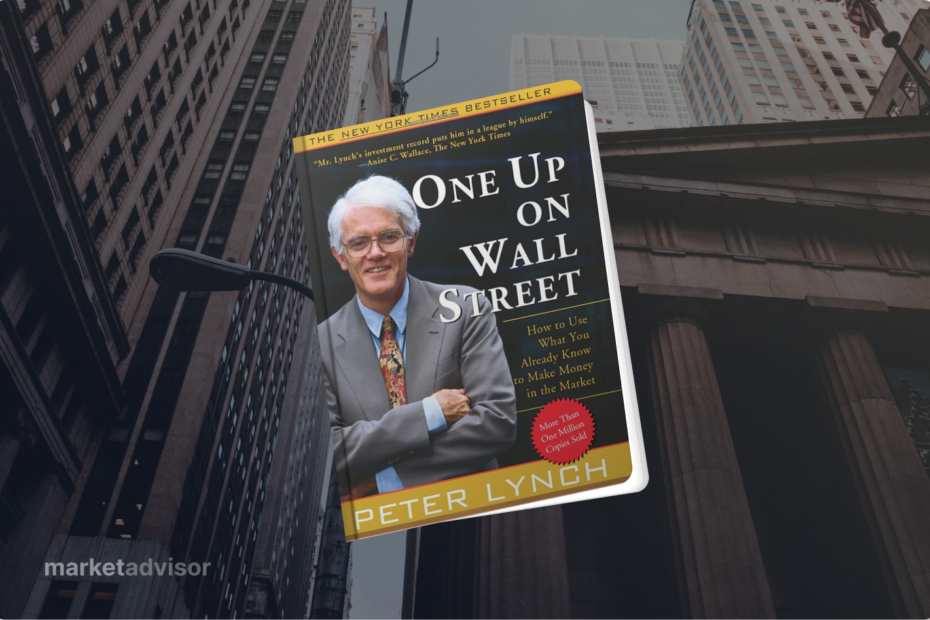Introduction
As an investor in the stock market, you may have encountered skeptics questioning your ability to outperform seasoned professionals. However, the legendary investor Peter Lynch has shown that amateur investors can indeed achieve remarkable success in the market. In his book “One Up on Wall Street,” Lynch shares invaluable insights that can empower individual investors to thrive. Let’s explore five of his most significant findings.
Takeaway Number 1: Why the Individual Investor Can Beat the Pros
Contrary to popular belief, professional investors face several disadvantages compared to their amateur counterparts. The limitations of managing large capital hinder their ability to explore smaller, high-growth opportunities. Additionally, fund managers often prioritize avoiding significant losses over seeking extraordinary gains, which hampers their performance. Moreover, they spend substantial time justifying their decisions to stakeholders, diverting focus from generating higher returns.
On the other hand, individual investors are not burdened by these constraints. They have the freedom to explore promising opportunities, unencumbered by external pressures. This advantage positions them well to outperform professionals in the stock market.
Takeaway Number 2: “If You Like the Store, Chances Are You’ll Love the Stock”
One of Lynch’s most crucial insights is that everyone possesses valuable information about publicly listed companies through their daily lives. For example, if you work at a clothing store, you may have valuable insights into the fashion industry. Such information can be advantageous in making investment decisions.
Lynch famously said, “If you like the store, chances are you’ll love the stock.” So, consider the products or services you frequently use and enjoy, as they might provide excellent investment opportunities. For instance, if you are an avid user of Spotify, Pepsi, or Amazon, you could potentially benefit from investing in these companies.
Takeaway Number 3: The 6 Categories of Stock Investments
Not all investment opportunities are equal, and Lynch identified six distinct categories of stocks:
- Slow growers: Large companies in mature industries with limited growth potential, appealing primarily to dividend investors.
- Stalwarts: Companies with moderate earnings growth, offering stable returns but not exceptional growth.
- Fast growers: Aggressive enterprises with high growth rates, though often priced accordingly.
- Cyclicals: Companies whose fortunes fluctuate with the business cycle, offering opportunities if you can predict market trends.
- Turnarounds: Companies with declining earnings or financial challenges that have the potential for significant recoveries.
- Asset plays: Companies undervalued due to the market overlooking valuable assets they possess.
Understanding these categories can guide investors in choosing suitable stocks based on their risk tolerance and investment goals.
Takeaway Number 4: 10 Traits of the Tenbagger
A “tenbagger” is a stock that appreciates tenfold from its initial purchase price, delivering substantial returns. While different types of stocks require different considerations, there are common positive signs to look for:
- The company name is unremarkable or even humorous, often leading to it being overlooked by analysts.
- The company engages in a seemingly dull or disagreeable industry.
- The stock is not heavily owned by institutions or followed by analysts, indicating untapped potential.
- There’s something unique or unconventional about the company that makes it stand out.
- The company operates in a stalling industry, potentially providing a competitive advantage.
- It holds a niche market position with strong barriers to entry.
- The company generates recurring revenues through subscriptions or consumable products.
- Insiders, who know the company best, are actively buying its shares.
- The company engages in share buybacks, demonstrating confidence in its future.
- The stock has the potential to surprise investors positively.
Takeaway Number 5: 5 Traits of the Reversed Tenbagger
Just as there are positive signs, there are also negative indicators that investors should be wary of:
- Companies operating in hot industries are often subject to intense competition.
- Beware of companies dubbed as “the next” great success stories without substantial evidence.
- Companies engaging in diworseification—expanding into unrelated industries—may dilute shareholder value.
- Companies overly reliant on a single customer’s business face significant risks.
- Be cautious of “whisper stocks” that promise miraculous outcomes without solid foundations.
Conclusion
Peter Lynch’s insights provide valuable lessons for both amateur and professional investors alike. By understanding the advantages of individual investors, leveraging personal knowledge, and categorizing investments, you can navigate the stock market with increased confidence. Moreover, recognizing positive and negative traits in stocks can help you make informed decisions, paving the way for potential investment success.
If you want to know more about Peter Lynch, you can read this article, where we explain how he increased his net worth.
Embrace these learnings and embark on a journey to achieve your financial goals in the exciting world of investing. Cheers to your investment success!

Pingback: The 5 Best Investing Books That Can Change Your Life In 2023